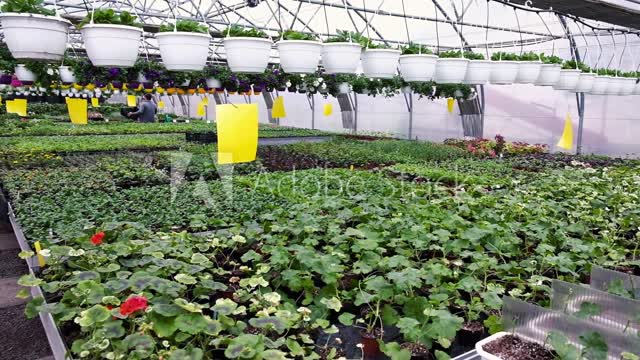Premium Only Content

How to do Vegetable Grafting Which Can Earn Upto Rs 4000/ Day, Expert Shares Tipsnagha R Manoj
Dr C Narayanan Kutty, an award-winning retired professor from the Kerala Agriculture University, shares tips on how one can grow vegetables commercially via grafting, a method known to yield faster and better results in farming.
Horticulture plays a significant role in India’s economy, contributing 6 per cent to the GDP and adding one-third to the total agricultural output.
India produces 320.48 million tonnes of vegetables and fruits, an amount greater than its food grain production. However, this is also a field where not many experiments were made earlier.
For example, until the first few years of this century, winter crops like cabbage and cauliflower were not grown in Kerala, under the assumption that the region has an unsuitable climate, says Dr C Narayanan Kutty, former professor and research director of Kerala Agricultural University.
“Even though cabbage thoran is an irreplaceable item in the state’s cuisine, and varieties of cauliflower dishes are served in all restaurants, our farmers were reluctant to try growing them,” he notes
.
Dr Narayanan Kutty was among the first few to grow vegetables by grafting in his university and the results were phenomenal, he says. He harvested cabbage and cauliflower weighing 1-1.5 kg each. Soon, the crops were extensively cultivated in the state.
“One reason why farmers were hesitant to grow them was that these crops are developed from saplings, not seeds. Most farmers, especially in Kerala, have the habit of cultivating vegetables from seeds only. This is because of the fear of a disease called bacterial wilt. The only way to let go of it was to graft a local variety of vegetable sapling with another one, which can withstand the bacterial attack,” explains the 61-year-old agriculturist.
Dr Narayanan Kutty learned more about grafting by attending a training session in Israel, a country where millions of saplings are produced every day through this method. He understood that it can save many days of work for farmers and can give greater yield as compared to regular seed farming. Also, the success rate is almost 30 per cent higher, he notes.
“I started with cabbage and cauliflower, and later tomato, brinjal, and chillies. I went ahead to standardise them by planting the seedlings in trays with 100 holes. Following this, we received many orders from garden nurseries and individual farmers. Several agricultural officers visited the university to study the growth too and they confirmed it to be effective,” he says.
Soon major garden nurseries and farmers took up this method of farming. From 2011 onwards, the State Horticulture Mission started distributing grow bags to every family to make the state self-sufficient in horticulture production. Along with the bags, they also provided vegetable seedlings grown in trays using the grafting method. This continues even today.
Little vegetable saplings undergoing the grafting process.
How to do grafting?
“This is skilled work and requires special training. Presently, Kerala Agricultural University provides classes to those who wish to do vegetable farming on a commercial basis,” shares Dr Narayanan Kutty.
About us https://bit.ly/3GUPFOa
Contact us +919942258153 kvk.subadhra@gmail.com
https://www.digistore24.com/redir/427920/CHUS87/
-
 9:02:15
9:02:15
Dr Disrespect
15 hours ago🔴LIVE - DR DISRESPECT - MARVEL RIVALS - RANKED
328K56 -
 1:00:46
1:00:46
The StoneZONE with Roger Stone
7 hours agoFake News Attack on Tulsi Gabbard! | The StoneZONE w/ Roger Stone
45.5K18 -
 2:24:08
2:24:08
WeAreChange
10 hours agoElon Musk & Donald Trump: The Emergency Halt That Saved Us
73.9K58 -
 1:13:11
1:13:11
Flyover Conservatives
1 day agoWARNING! Is Bitcoin CIA-Controlled? – The Shocking Reality of Digital Assets - Clay Clark | FOC Show
30.5K7 -
 2:00:37
2:00:37
Space Ice
12 hours agoSpace Ice & Redeye Try To Figure Out Seagal's Most Incoherent Movie
111K2 -
 1:00:36
1:00:36
PMG
1 day ago $9.55 earned"Santa Trump is Giving Us Hope - But Will Johnson Stand Strong?"
89.3K14 -
 54:30
54:30
LFA TV
1 day agoThe German Strongman’s Arrival Is Imminent | Trumpet Daily 12.18.24 7PM EST
68K4 -
 2:04:11
2:04:11
Melonie Mac
10 hours agoGo Boom Live Ep 32! Soul Reaver Remastered!
56.1K10 -
 39:11
39:11
Sarah Westall
8 hours agoDigital Slavery and Playing with Fire: Money, Banking, and the Federal Reserve w/ Tom DiLorenzo
65.6K8 -
 1:38:38
1:38:38
2 MIKES LIVE
12 hours ago2 MIKES LIVE #157 ILLEGALS, PROTESTORS AND DRONES!
44.7K1